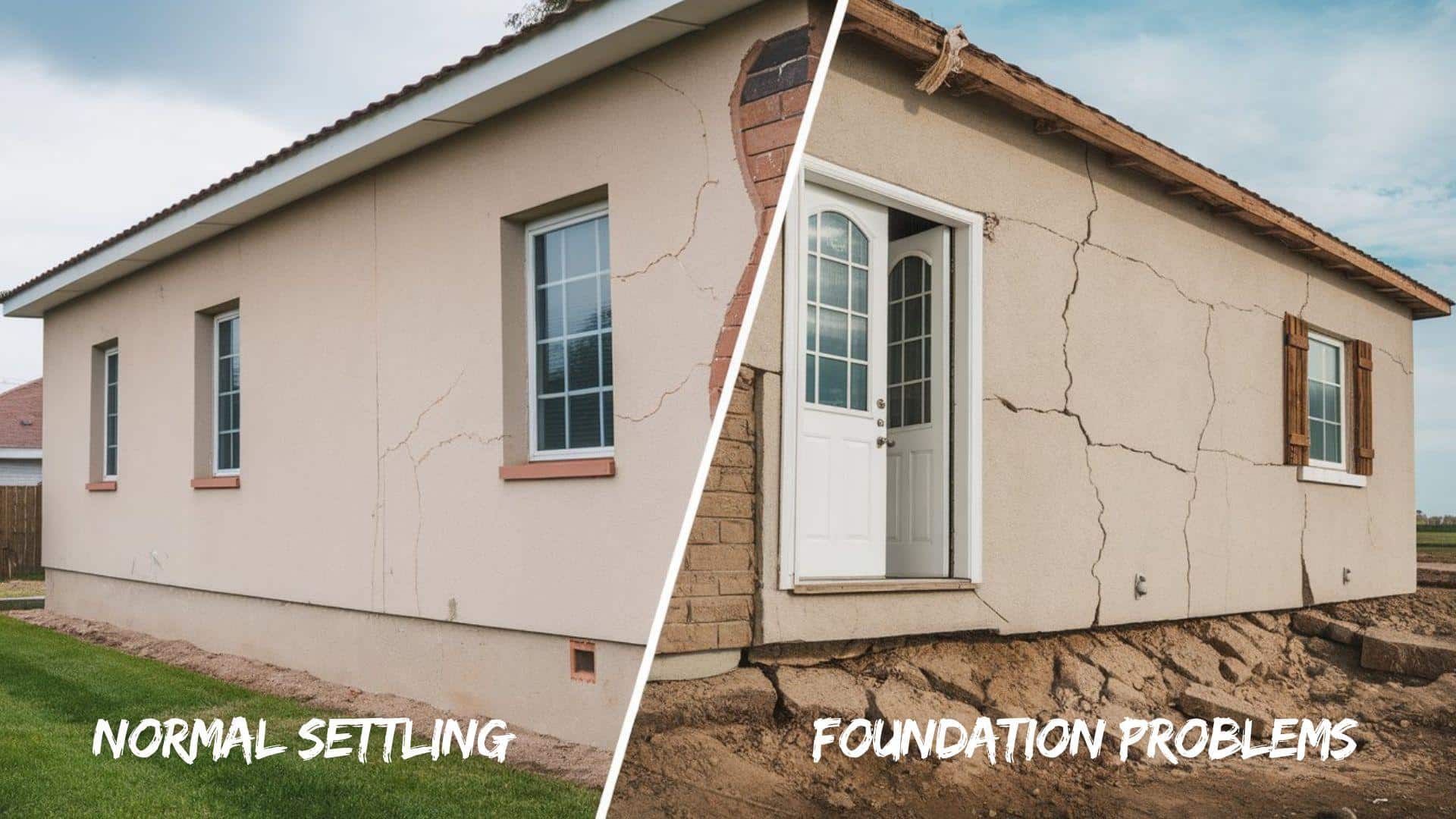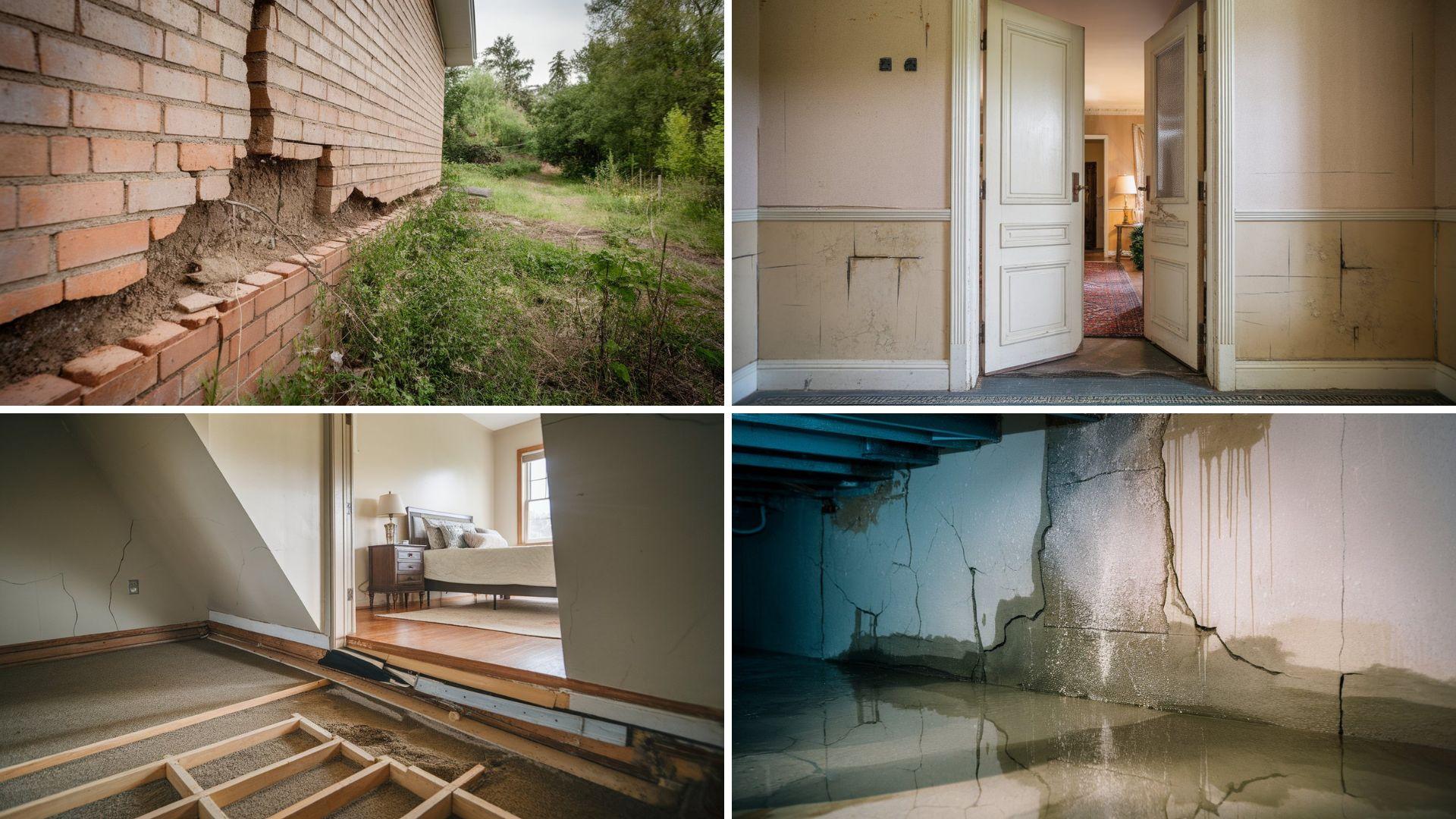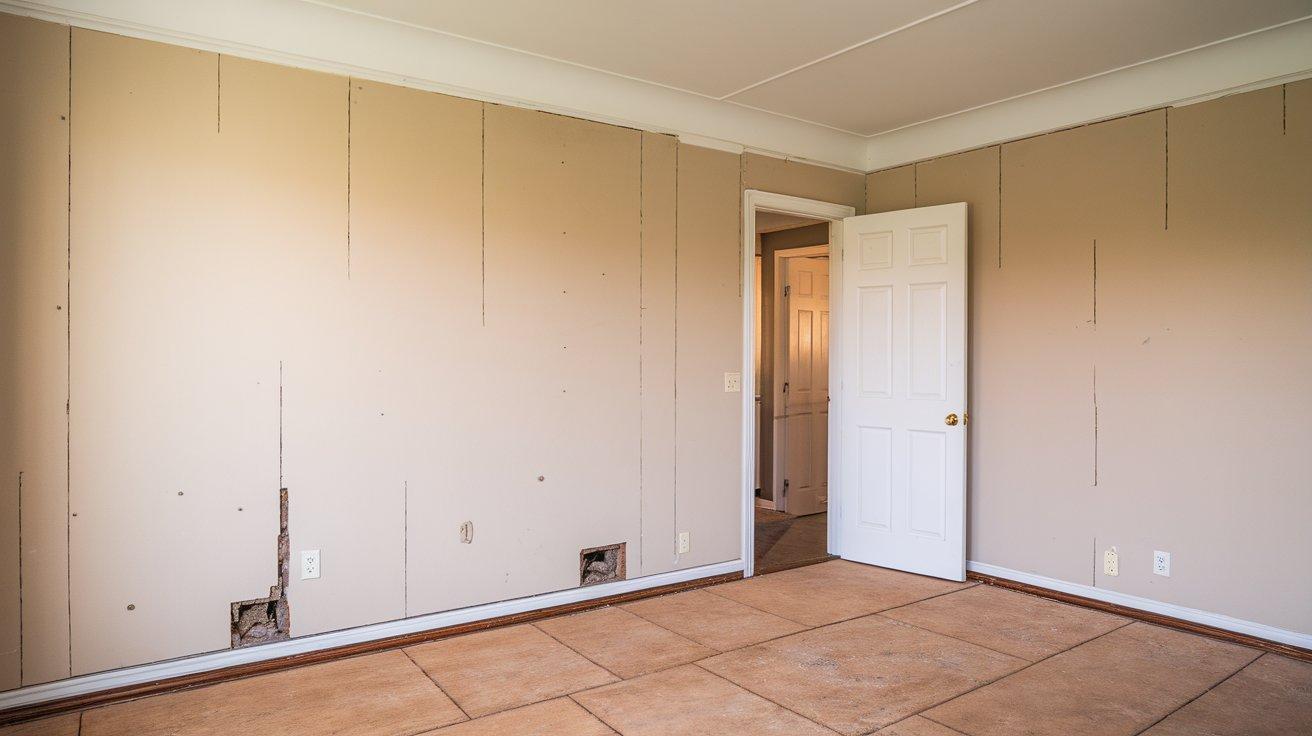Why do foundation cracks appear in some homes but not others?
The answer depends on the age of your house, soil conditions, and the quality of its construction. Understanding these factors helps you respond appropriately to structural changes.
New homes experience settling as materials adjust to environmental conditions. This natural process can create minor cosmetic issues, which typically resolve within two years of construction completion.
Real foundation problems develop from soil movement, water damage, or construction defects. These issues worsen over time and require professional intervention to prevent costly structural damage.
In this blog, you’ll learn to identify normal settling versus serious foundation problems, understand repair costs, and know when to seek professional help.
What Are Foundation Problems?
Foundation problems involve structural damage that affects the stability and safety of your home. These issues develop when soil conditions change dramatically, water infiltrates foundation walls, or construction defects become apparent over time.
Foundation problems are caused by shifting or unstable soil and worsen over time, potentially compromising the structural integrity of your home.
Unlike settling, which stabilizes, these issues require professional intervention to prevent further damage.
Foundation damage can occur at any point during your home’s lifespan. Age, weather events, plumbing leaks, and poor drainage systems all contribute to these serious structural problems.
Professional assessment becomes necessary when foundation problems appear. Ignoring these issues leads to expensive repairs, safety hazards, and potential collapse of structural elements.
Settling vs. Foundation Problems: Key Differences
Settling is a temporary process that resolves on its own, while foundation problems worsen over time and require professional repair. The timing, severity, and cost of fixes vary significantly between these two issues.
| Normal Settling | Foundation Problems |
|---|---|
| Occurs within the first 1-2 years | Happens any time after construction |
| Stops progressing naturally | Continues getting worse |
| Creates minor cosmetic issues | Causes structural damage |
| Costs under $500 to fix | Repairs range $3,000-$15,000+ |
| Hairline cracks (less than 1/8 inch) | Wide cracks (over 1/4 inch) |
| Affects non-load-bearing walls | Impact structural elements |
Common Warning Signs of Foundation Damage
Foundation problems show clear warning signs that homeowners should never ignore. These symptoms indicate structural movement that requires immediate professional evaluation and repair.
1. Exterior Wall Cracks
Large cracks in exterior walls indicate serious foundation movement. These cracks often appear in stair-step patterns along brick or block walls.
Horizontal cracks signal the most severe problems. They suggest foundation walls are bowing inward from soil pressure.
2. Doors and Windows that Stick
Windows and doors that suddenly become difficult to open or close indicate foundation shifting. The frame warps when foundations move unevenly.
Gaps around door and window frames also suggest foundation problems. These spaces allow air and moisture to enter your home.
3. Uneven or Sloping Floors
Floors that slope noticeably toward one direction signal foundation settlement. Walking across these areas feels like going downhill. Bouncy or spongy floors indicate foundation support problems. The structure underneath may have shifted or weakened.
4. Basement Water Issues
Water seepage in basements often accompanies foundation problems. Cracks allow groundwater to enter living spaces.
White powder on basement walls indicates mineral deposits from water. This efflorescence suggests ongoing moisture problems.
Common Signs that Indicate Normal Settling
Normal settling creates minor issues that stabilize over time. These cosmetic problems appear during the first year and rarely require expensive professional repairs.
- Small Nail Pops: Nail pops in drywall are common settling signs. These small bumps appear when wood shrinks and nails become loose. They’re easily fixed with spackle and paint.
- Hairline Cracks: Thin cracks in walls or ceilings typically indicate normal settling. These cracks measure less than 1/8 inch wide. Most can be repaired with caulk or joint compound.
- Minor Floor Squeaks: New floors often squeak as materials adjust to temperature and humidity changes. These sounds usually disappear within months. Walking patterns help materials settle into place naturally.
- Small Gaps: Tiny gaps between trim and walls are normal settling effects. These spaces rarely exceed 1/16 inch in width. Caulk or wood filler easily covers these minor openings.
When to Call a Professional?
Certain foundation issues require immediate expert evaluation to prevent serious structural damage. Delaying professional help when these signs appear can lead to expensive repairs and safety hazards.
Professional contractors have specialized tools and experience to assess foundation problems accurately. They can determine whether issues stem from normal settling or require structural intervention to protect your home’s integrity.
Call a Professional For:
- Cracks wider than 1/4 inch
- Doors or windows that won’t close properly
- Sloping floors or walls
- Basement water problems
- Cracks that continue growing
- Multiple warning signs appearing together
Cost Implications: Settling Fixes vs. Foundation Repair
Understanding repair costs helps homeowners budget appropriately and avoid unnecessary expenses. The price difference between settling fixes and foundation repairs can be thousands of dollars.
| Issue Type | Typical Cost Range | Timeline |
|---|---|---|
| Normal Settling Repairs | $100 – $800 | 1-2 days |
| Minor Foundation Crack Repair | $500 – $1,500 | 1-3 days |
| Foundation Stabilization | $3,000 – $8,000 | 1-2 weeks |
| Major Foundation Replacement | $15,000 – $40,000 | 2-4 weeks |
Settling repairs are typically minor, involving cosmetic fixes like filling small cracks or adjusting trim, while foundation repairs are more complex, requiring structural work and higher costs.
Prevention Tips to Avoid Foundation Damage
Preventing foundation problems costs far less than repairing them after damage occurs. Simple maintenance tasks protect your home’s structural integrity and save thousands in future repair costs.
- Proper Drainage: Install gutters and downspouts to direct water away from your foundation. Maintain 6-foot clearance from house walls.
- Soil Grading: Ensure ground slopes away from your home. Water should flow toward street drains, not toward foundation walls.
- Consistent Moisture: Keep soil moisture levels steady around your foundation. Avoid both flooding and complete drying of the surrounding soil.
- Tree Management: Plant large trees at least 20 feet from your home. Tree roots can damage foundations by absorbing soil moisture.
- Regular Inspections: Check your foundation twice yearly for new cracks or changes. Early detection prevents minor issues from becoming major problems.
- Proper Ventilation: Maintain adequate airflow in crawl spaces and basements. Good ventilation prevents moisture buildup that weakens foundations.
Conclusion
Understanding the difference between settling and foundation problems saves money and stress.
Normal settling creates minor cosmetic issues that stop within two years. Foundation problems cause structural damage that worsens over time.
Watch for warning signs like wide cracks, sticking doors, and sloping floors. These symptoms indicate serious foundation issues requiring professional help. Early action prevents expensive repairs later.
Monitor small cracks and nail pops without panic. These minor issues typically result from normal settling processes. Most disappear as your home finishes adjusting to its environment.
Have questions about foundation concerns in your home? Leave a comment below with your thoughts and experiences dealing with these issues.
Frequently Asked Questions
Do Houses Still Settle After 30 Years?
Houses can experience minor movement after 30 years due to soil changes and weather conditions. Most major settling occurs within the first two years of construction completion.
How Urgent Are Foundation Issues?
Foundation problems require prompt attention to prevent structural damage. Contact professionals immediately when you notice warning signs to avoid costly repairs and safety risks.
Will a House with Foundation Issues Collapse?
Foundation problems develop slowly over many years before causing collapse. Early detection and proper repairs prevent dangerous structural failure in most residential homes.











